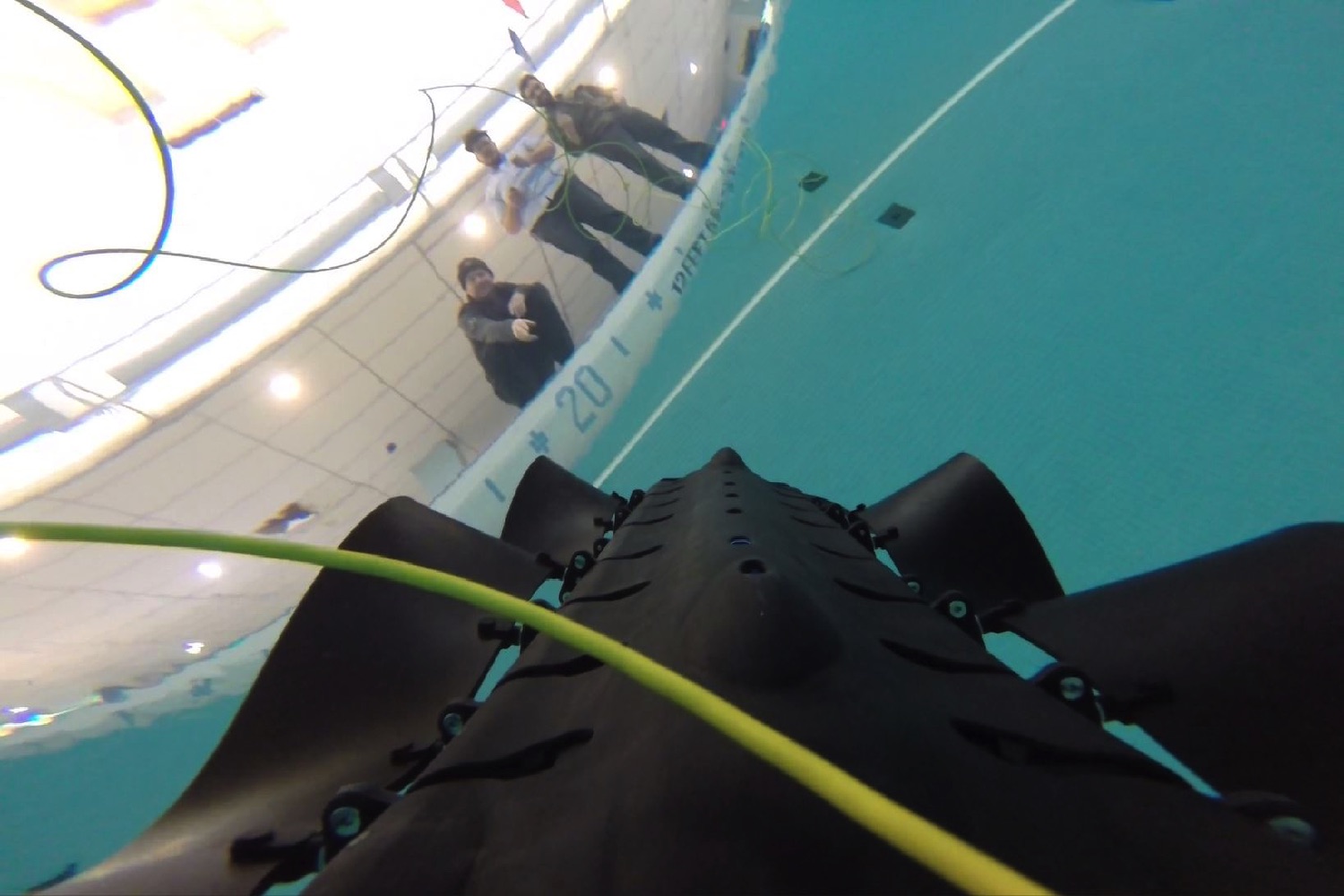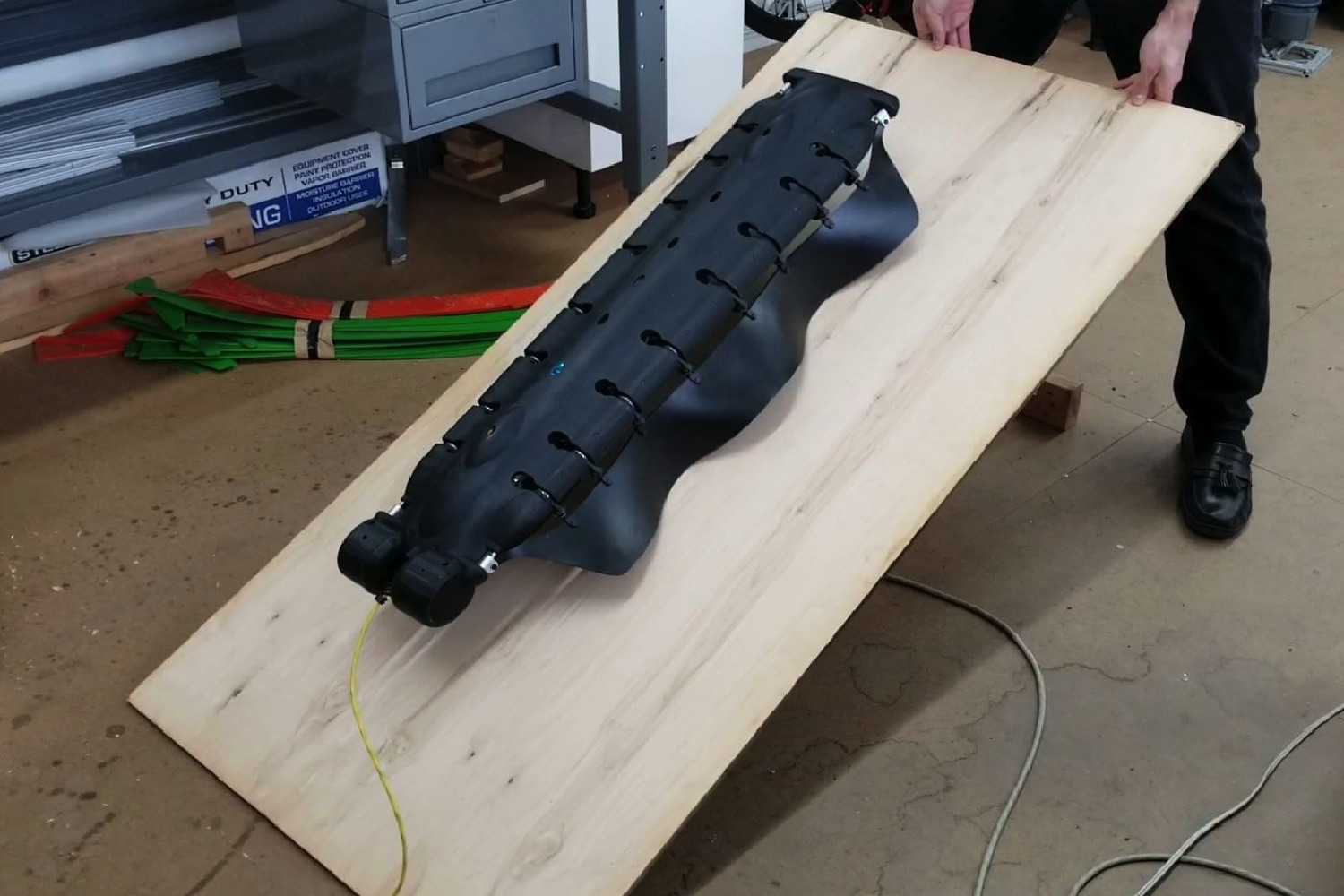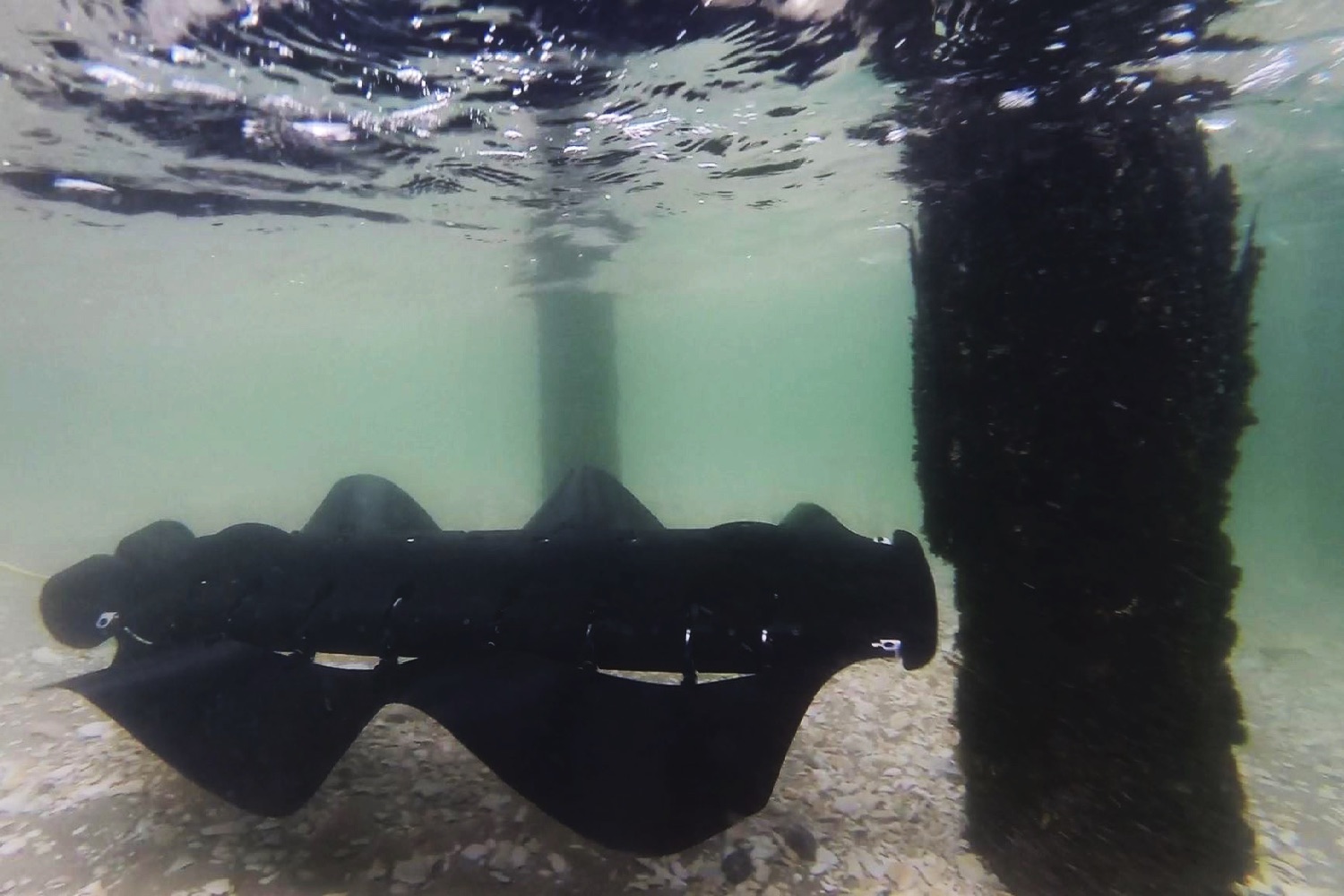Biomimicry, the concept of modellng systems found in nature to solve complex problems, is popular among roboticists. But while the robots that result from it can gain the strengths of particular forms of animal locomotion or other abilities, they also adopt the species’ same limitations. For example, an aquatic fish-inspired swimming robot may be really adept at moving in water, but it’s probably not going to be too effective on dry land. Because, you know, it’s based on a fish.
That’s where an intriguing new robot created by the company Pliant Energy Systems switches things up. Not only is it pretty darn effective at maneuvering underwater, using a pair of servo-assisted silicone fins, but it can also turn these fins into “legs” to continue to travel while out of the pool. Heck, it can even move effectively on ice: A particularly tough surface for virtually anything to move on.
“Velox can use several modes of locomotion found in the animal kingdom using just one pair of fins,” Benjamin “Pietro” Filardo, founder and CEO of Pliant, told Digital Trends. “These fins are best described as four-dimensional objects with a hyperbolic geometry that allows the robot to swim like a ray, crawl like a millipede, jet like a squid, and slide like a snake. A craft equipped with this system [gains] unprecedented freedom to travel through a range of environments in a single mission.”
Velox is intended as a proof-of-concept demonstration platform. The work is supported by the U.S. Office of Naval Research, which is interested in exploring the potential of different types of robot. However, Filardo said that Pliant has commercialization in mind and is currently exploring potential partners.
“As an underwater vehicle, the robot’s ability to turn on a dime and to reverse direction almost instantaneously make it ideal for something like coral reef inspection or dragon fish hunting, where you want to look around and between objects and maneuver quickly,” he noted. “Potential value to polar missions is self-evident for purposes such as monitoring and filming wildlife, surveying ice-melt, and exploring other opportunities that will open up as the polar ice caps recede. One can also envisage Velox as an ice-rescue robot towing a rope and life buoy to a victim who has fallen through ice.”
The research could additionally be used to create a range of specialty vehicles. For instance, its insights could be utilized to develop a large, human-operated amphibious vehicle able to travel over both water and ice, similar to a hovercraft, but minus the noise and blasting.
One thing’s for sure: Wherever Velox goes next — both figuratively and literally — we’re excited to follow it.







